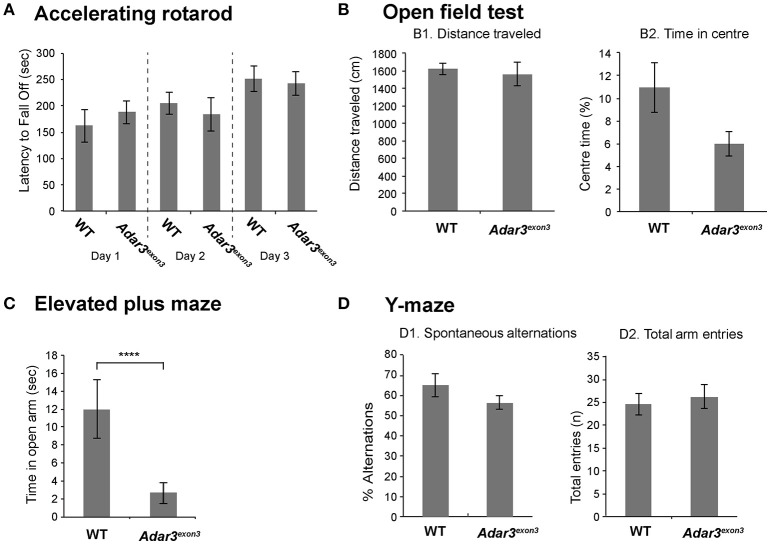Figure 3.
Adar3exon3 mice show increased anxiety in the elevated plus maze test. (A) No differences were observed between Adar3exon3 (n = 10) and WT littermates (n = 11) in the accelerating rotarod over a 3 day testing period indicating normal motor coordination and balance skills. (B) Adar3exon3 mice displayed normal locomotor (B1) and anxiety (B2) behavior as neither the total distance traveled nor the time spent in the center of an open field test were statistically significant between Adar3exon3 (n = 10) and WT littermates (n = 11). (C) However, in the elevated plus maze test of anxiety, Adar3exon3 (n = 10) mice spent significantly less time in the open arms as compared to WT littermates (n = 11) indicating an anxiogenic phenotype in the Adar3exon3 mice. (D) No significant differences were found between Adar3exon3 (n = 10) and WT littermates (n = 10) in either the percentage of spontaneous alternations (D1) or total arm entries (D2) in the Y-maze suggesting normal spatial learning and memory. Error bars indicate SEM. Star (***) indicates P < 0.05.

